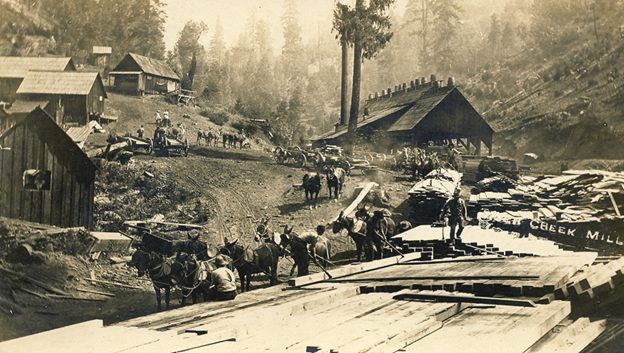Logging and lumbering in California’s Sierra Nevada began well before gold was discovered. In the early 1800′s logging was a laborious, slow, and dangerous profession, with brute strength and animal power being top requirements.
The discovery of gold in 1848 brought a new demand for wood products. In January of 1848, the sawmill that James Marshall was building at Coloma was to be powered by water from the nearby American River. Although steam-powered mills had been sawing lumber for many years back East, water power was as good as it got in California. In fact, out West, much of the small quantity of lumber needed was still being produced by whip-sawing. The log was rolled onto supporting beams over a pit, while the head sawyer stood on the log and handled one end of the saw. His less fortunate partner worked in the pit, eating sawdust all day.
While Marshall found gold, the resulting population explosion created a tremendous demand for timber products. They were needed for buildings, water flumes, mine timbers, and more.

